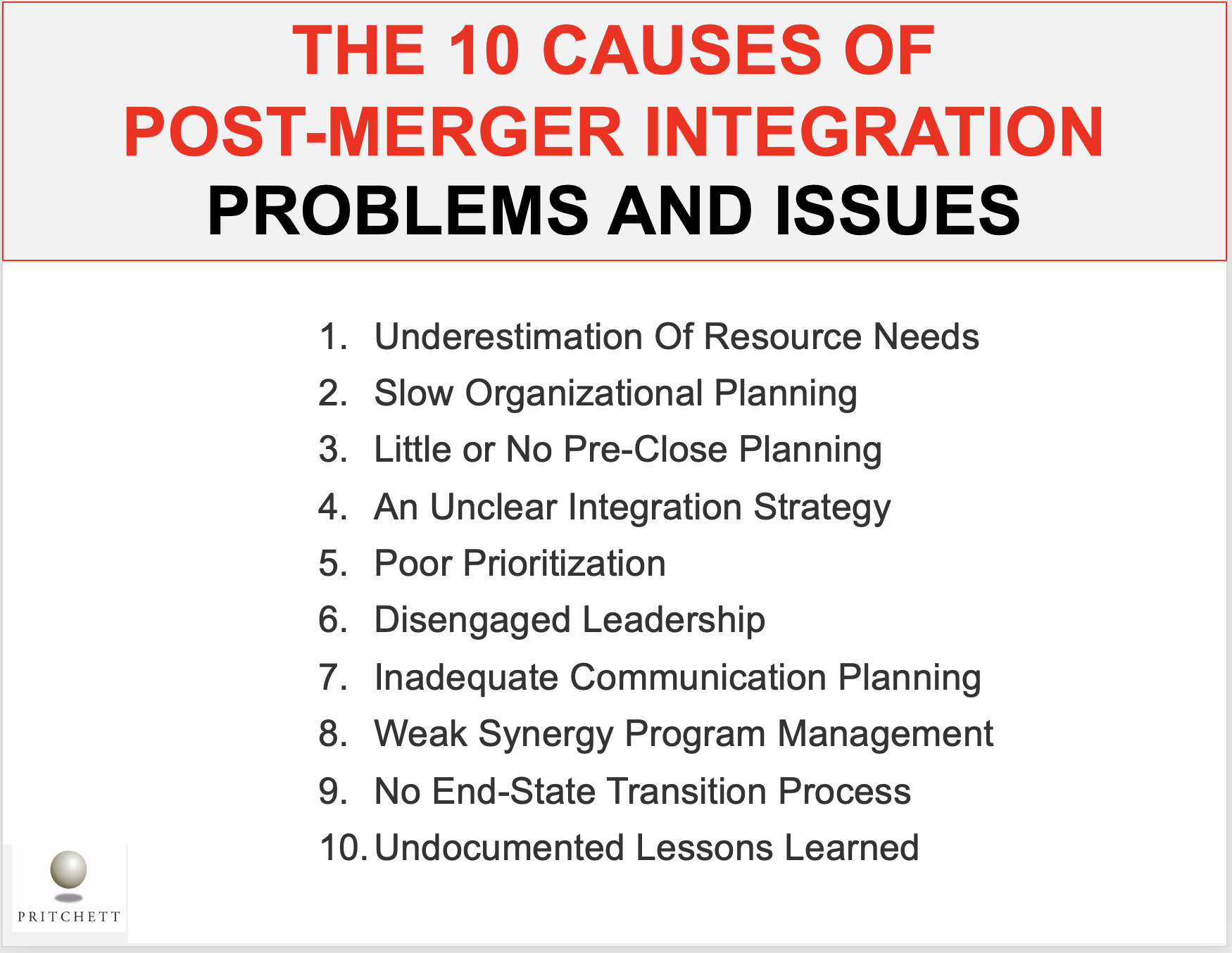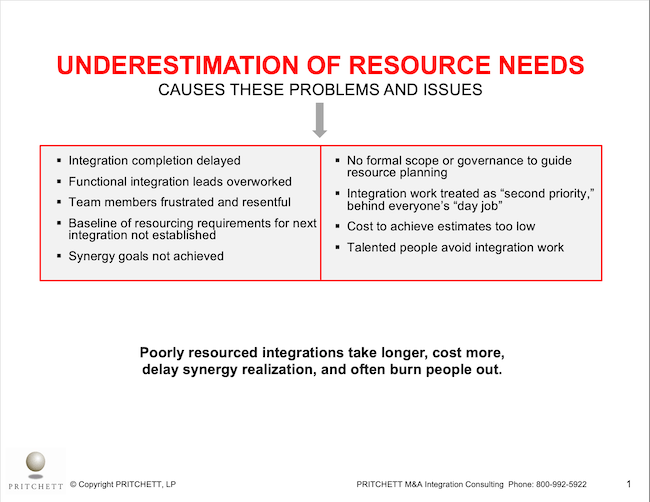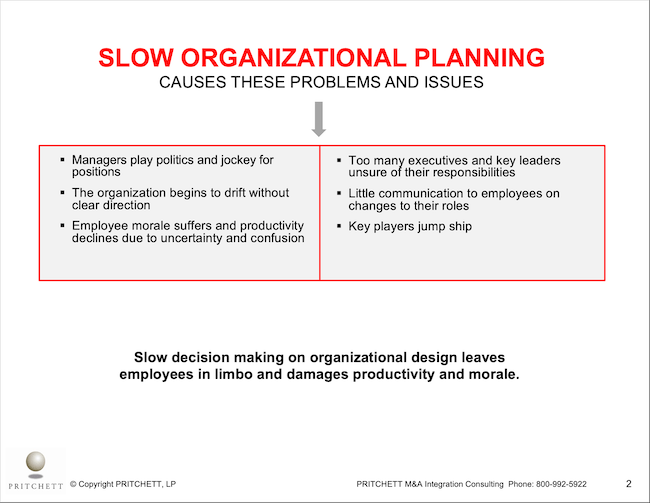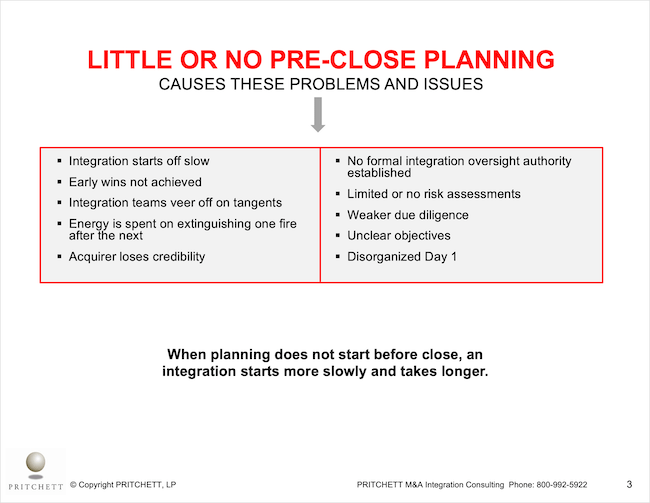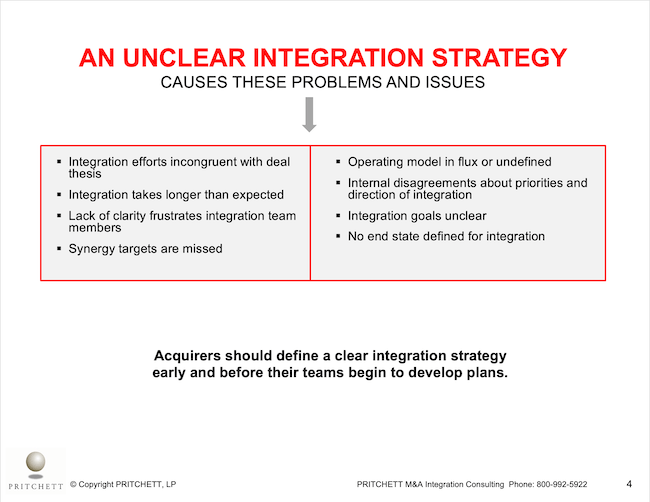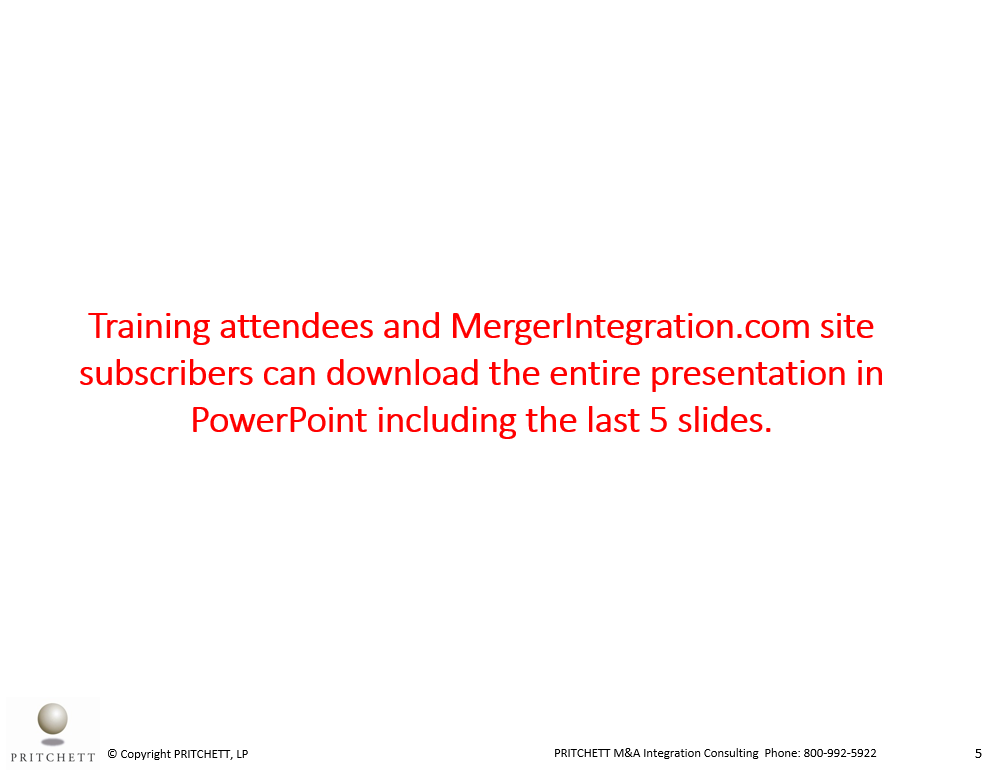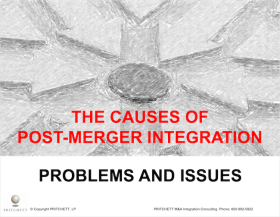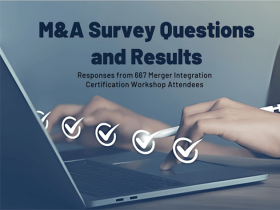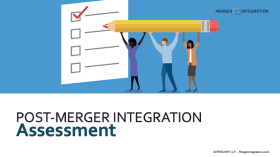Root Causes of M&A Integration Problems and Issues:
-
Underestimation Of Resource Needs
-
Slow Organizational Planning
-
Little or No Pre-Close Planning
-
An Unclear Integration Strategy
-
Poor Prioritization
-
Disengaged Leadership
-
Inadequate Communication Planning
-
Weak Synergy Program Management
-
No End-State Transition Process
-
Undocumented Lessons Learned

